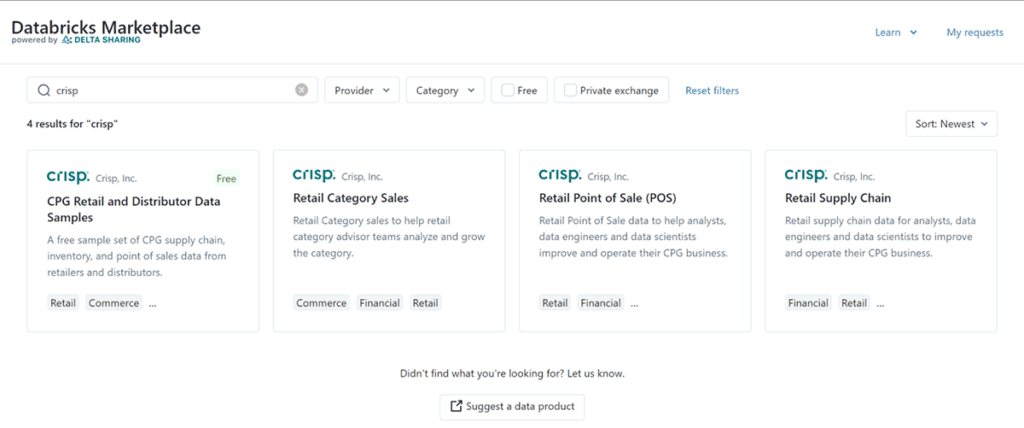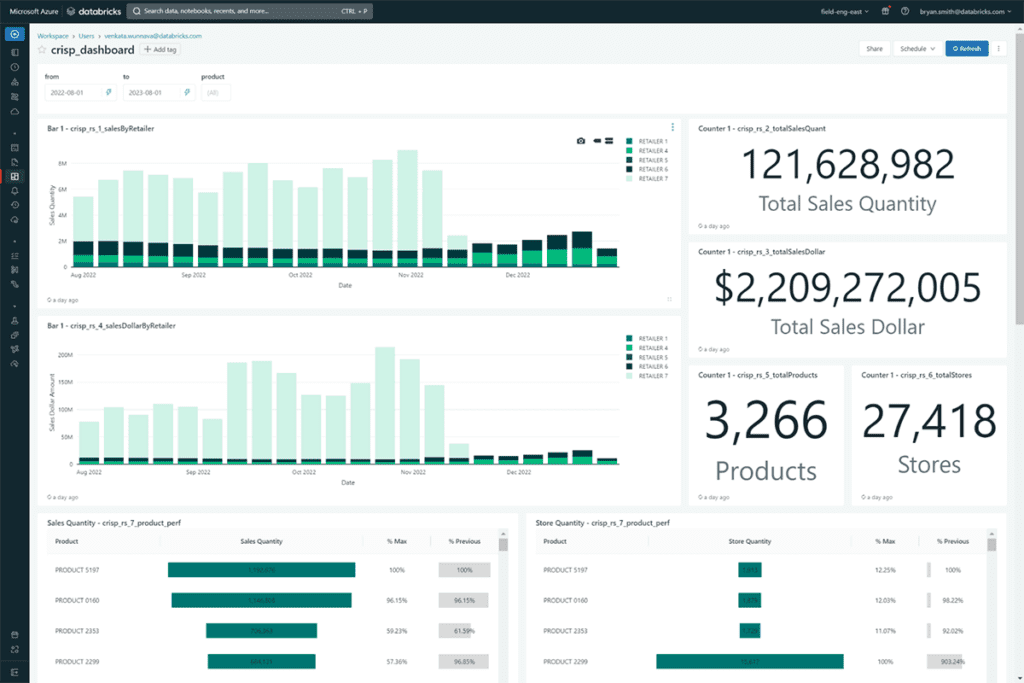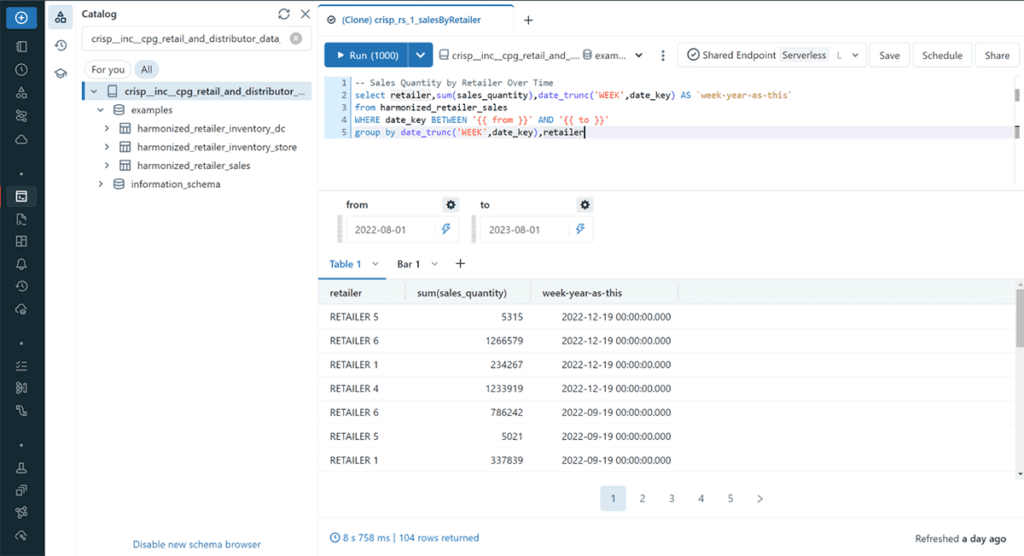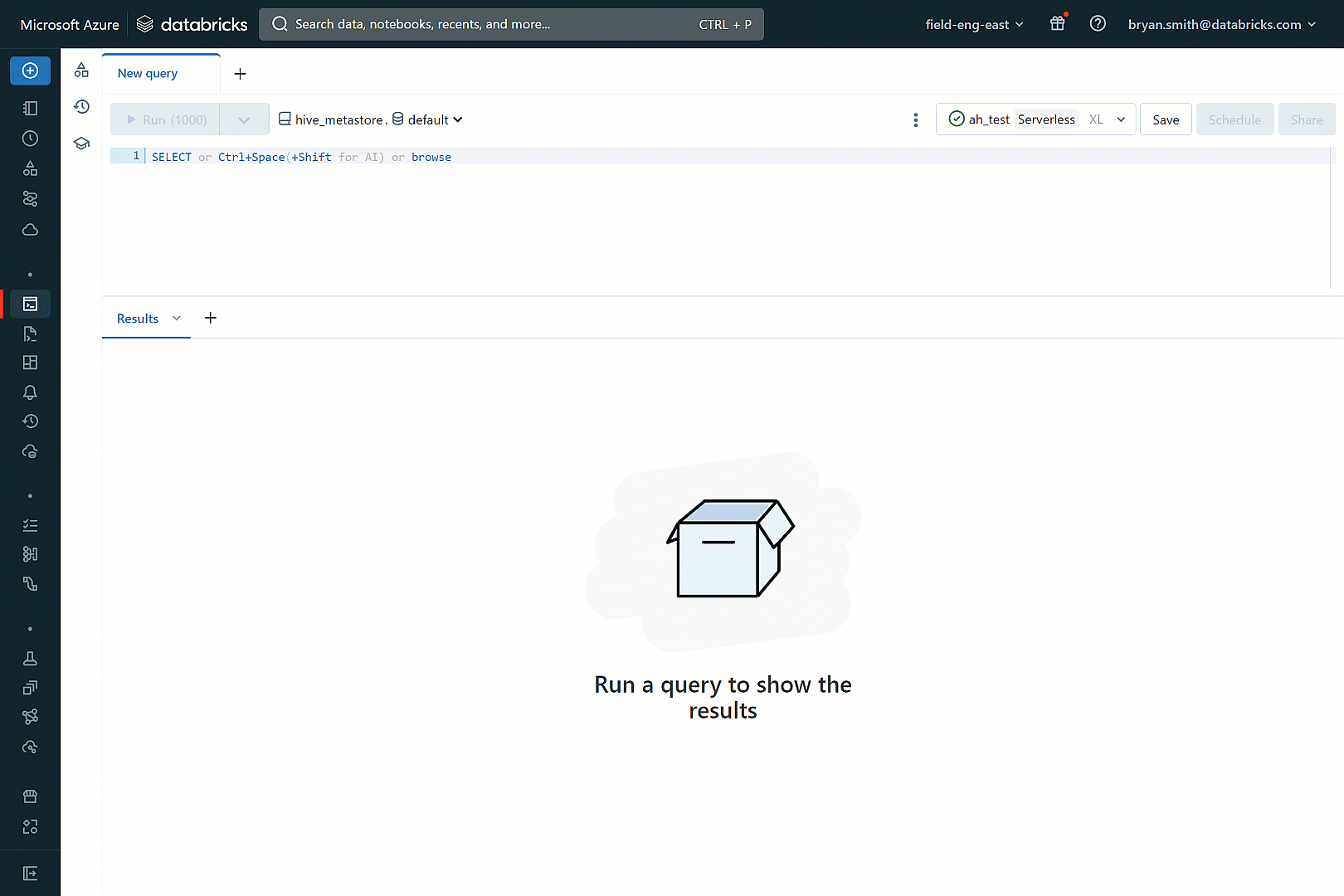Crisp and Databricks help suppliers easily access and analyze data from 40+ retailers and distributors through the Databricks Marketplace.
by Venkata Wunnava, Timothy Sepp, Dag Liodden, Casey Luther, Nickil Mishra, Sridhar Paladugu, David Kulwin, Sam Steiny & Bryan Smith
Retailers have long shared sales and inventory data with their suppliers. Access to this information enables both parties to assess consumer demand, collaborative on activities to increase that demand, and identify and resolve out-of-stocks. Access to this data can also help suppliers improve OTIF performance and play the role of category captain, ultimately driving higher revenues for both the retailer and the supplier.
But for brands, keeping up with the different systems, data models, and release cadences associated with each retail partner is challenging. Retailer-aligned teams typically spend an inordinate amount of time downloading, organizing, and restructuring data in order to obtain the insights they require. Even so, a holistic view of inventory and demand across multiple retail organizations that would be incredibly helpful for planning production cycles often eludes supplier teams.
Recognizing these challenges, Crisp and Databricks have partnered to help suppliers access data from over 40+ retailers and distributors directly within their cloud environment. Crisp harmonizes data from retailers using a standard model that provides suppliers a consistent view while retaining the retailer-specific information retailer-aligned teams require.
Available through the Databricks Marketplace, suppliers now can easily access this information without time-consuming cycles of data download and pre-processing. And by leveraging the analytics capabilities within Databricks, analysts and data scientists can easily uncover insights to power decisions across the enterprise.
Accessing Crisp data in Databricks is fast and easy
To access data via Crisp, Databricks users simply need to navigate to the Marketplace icon towards the bottom of the left-hand navigation in their Databricks workspace. A quick search for Crisp reveals four data products available to suppliers authorized by their retail partners for data access.

These listings provide suppliers with access to:
- Retail Point of Sale (POS): Product-level units sold and sales amounts by store location
- Retail Supply Chain: DC fill rates, inventory and to-store shipments as well as store inventories
- Retail Category Sales: Category-level units sold and sales amounts by store location as available to retailer-designated category captains
- CPG Retail & Distributor Data Samples: Sample data for all three offerings
Clicking the Request Access button in the right-hand upper corner of the page will open a form to request access to data authorized by your retailer partners via Crisp. Once you’ve signed up with Crisp, you’ll be able access your retail data seamlessly within Databricks through Delta Sharing.
Analyze data to drive decisions
Databricks customers will find that data from Crisp is laid out in easy to consume fact and dimension tables. For analysts, this represents a familiar way of presenting information, and aligns well with the many business intelligence tools organizations can connect with Databricks.
Using external tools like Tableau, Power BI and many others, analysts can easily leverage retail data to perform exploratory analysis. Databricks also offers native dashboarding that allow analyst teams to assemble key insights for repeatable consumption. A brief overview of the Databricks dashboarding capabilities can be found here.

To construct a dashboard, simply use the Databricks SQL Editor built into the workspace UI to write a query, create visualizations, and add the visualizations to a dashboard. The SQL Editor can be used in a standalone manner as well by business analysts familiar with industry-standard SQL syntax to query the data as needed. In scenarios where the results of a query are important to monitor, these queries can be configured to run on a schedule and to trigger notifications when their results meet criteria specified by the query author. Databricks offers a wealth of functionality built into the environment to help you get the most out of the data.

For additional support in writing SQL queries, a built-in Databricks Assistant powered by generative AI can translate English-language questions into the required syntax, using existing knowledge of the data structures in the Crisp dataset.

Tap into retail data’s full potential with data science
As a unified data platform, Databricks brings together both business analytics and data science capabilities into one environment. Supporting Python, SQL and R, data scientists can feel at home performing their work within the Databricks environment, minimizing the need to replicate data to another environment – which is not only time consuming and expensive, but can also put brands at risk of violating terms and conditions specified by retailer partners.
As an open platform, data scientists can perform their work within Databricks without compromise in terms of which libraries or packages they employ. Model management and tracking along with workflow management capabilities help ensure that this work successfully transitions from experimentation to operationalization without putting undue strain on the data science team.
Using this capability, data scientists within supplier organizations can perform sophisticated out-of-stock analyses and demand forecasting, providing their teams insights into what happened, why, and even what will happen next.

To get started using Crisp with Databricks, visit the Databricks Data Marketplace and request access to the Crisp data or request a demo from the Crisp team.